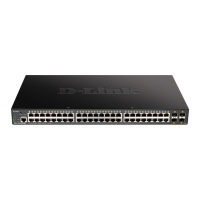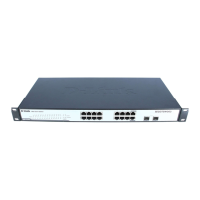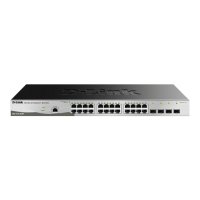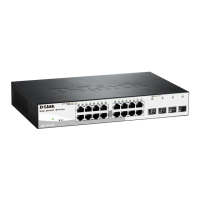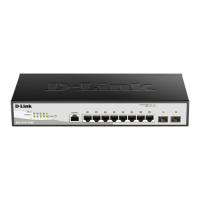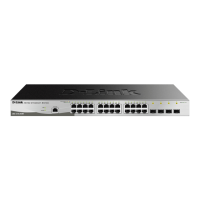DGS-1250 Series Gigabit Ethernet Smart Managed Switch Web UI Reference Guide
167
The fields that can be configured are described below:
Parameter Description
Sequence No.
Enter the sequence number of this ACL rule here. The range is from 1 to 65535. If
this value is not specified, the system will automatically generate an ACL rule
number for this entry.
Action Select the action that this rule will take here. Options to choose from are Permit
and Deny.
Protocol Type Select the protocol type option here. Options to choose from are TCP, UDP,
ICMP, Protocol ID, ESP (50), PCP (108), SCTP (132), and None.
• Value - The protocol ID can also manually be entered here. The range is
from 0 to 255.
• Fragments - Select this option to include packet fragment filtering.
Source
Select and enter the source IPv6 information here. Options to choose from are
Any, Host, and IPv6.
• When the Any option is selected, any source traffic will be evaluated
according to the conditions of this rule.
• When the Host option is selected, enter the source host IPv6 address here.
• When the IPv6 option is selected, the Prefix Length option will also be
available. Enter the source IPv6 address and prefix length value in the
spaces provided.
Destination
Select and enter the destination IPv6 information here. Options to choose from
are Any, Host, and IPv6.
• When the Any option is selected, any destination traffic will be evaluated
according to the conditions of this rule.
• When the Host option is selected, enter the destination host IPv6 address
here.
• When the IPv6 option is selected, the Prefix Length option will also be
available. Enter the destination IPv6 address and prefix length value in the
spaces provided.
Source Port
Select and enter the source port value here. Options to choose from are =, >, <, ≠,
and Range.
• When selecting the = option, the specific selected port number will be used.
• When selecting the > option, all ports greater than the selected port, will be
used.
• When selecting the < option, all ports smaller than the selected port, will be
used.
• When selecting the ≠ option, all ports, excluding the selected port, will be
used.
• When selecting the Range option, the start port number and end port
number selected, of the range, will be used. Alternatively, the port number(s)
can manually be entered in the space(s) provided, if the port number(s) is/are
not available in the drop-down list.
This parameter is only available in the protocol type TCP and UDP.
Destination Port Select and enter the destination port value here. Options to choose from are =, >,
<, ≠, and Range.
• When selecting the = option, the specific selected port number will be used.
• When selecting the > option, all ports greater than the selected port, will be
used.
• When selecting the < option, all ports smaller than the selected port, will be
used.
• When selecting the ≠ option, all ports, excluding the selected port, will be
used.
• When selecting the Range option, the start port number and end port
number selected, of the range, will be used. Alternatively, the port number(s)
can manually be entered in the space(s) provided, if the port number(s) is/are
not available in the drop-down list.
This parameter is only available in the protocol type TCP and UDP.
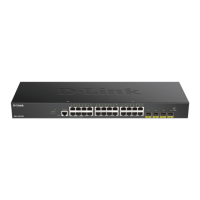
